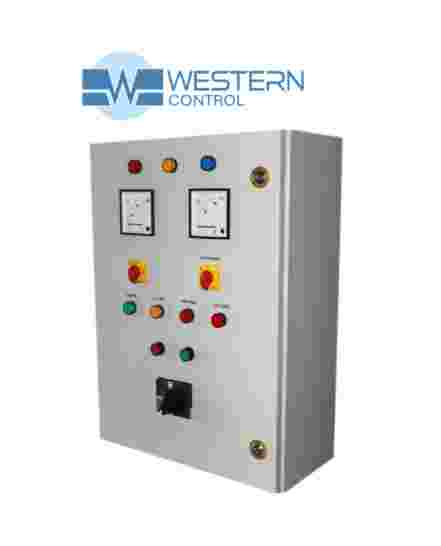In modern industrial and commercial electrical systems, 3 Phase Electrical Panels play a crucial role in distributing power efficiently and safely. These panels are the backbone of large electrical installations, offering the capacity and flexibility required for high-load applications. Whether you're planning a new electrical system or upgrading an old one, understanding how 3 Phase Electrical Panels function can help you make informed decisions.
What Are 3 Phase Electrical Panels?
3 Phase Electrical Panels are distribution boards designed to handle three-phase electrical power. Unlike single-phase systems, which deliver power via two wires (one live and one neutral), three-phase systems use three live wires and sometimes a neutral. This setup ensures a constant and balanced power load, which is ideal for large motors, heavy machinery, and extensive lighting systems.
Each 3 Phase Electrical Panel contains a main circuit breaker and several branch breakers that distribute power to different areas or equipment. These panels are common in factories, data centers, office buildings, and large residential complexes.
Key Components of a 3 Phase Electrical Panel
To understand how 3 Phase Electrical Panels operate, it’s important to know the main components involved:
-
Main Breaker: Controls the power coming into the panel. It can disconnect the entire panel from the electrical supply.
-
Bus Bars: Conductive metal strips that distribute power to various circuit breakers within the panel.
-
Circuit Breakers: Protect individual circuits by interrupting the flow of electricity in case of overload or short circuit.
-
Neutral and Ground Bars: Provide grounding and return paths for the electric current.
A major advantage of using 3 Phase Electrical Panels is their ability to support balanced loads, reducing energy loss and increasing equipment lifespan.
Why Choose a 3 Phase Electrical Panel?
There are several reasons why 3 Phase Electrical Panels are preferred in large-scale applications:
-
Efficiency: They deliver consistent and balanced power, improving the performance of motors and other equipment.
-
Scalability: Additional circuits can be added easily as your power needs grow.
-
Safety: With proper design and components, these panels offer enhanced protection against electrical faults.
-
Reduced Wiring Costs: A three-phase system can transmit more power using less copper, making it cost-effective for long distances.
If your facility uses high-powered devices, switching to a three-phase system is often a smart investment.
Installation and Safety Considerations
When installing 3 Phase Electrical Panels, it's vital to comply with local electrical codes and standards. Only certified electricians should perform the installation, as incorrect wiring can lead to dangerous faults.
Key safety tips include:
-
Use appropriately rated breakers for each circuit.
-
Ensure the panel is grounded properly.
-
Maintain clear labeling for all circuits.
-
Regularly inspect and maintain the panel to avoid overheating and other issues.
Safety is paramount, especially when dealing with high-voltage three-phase systems.
Integration with Bus Bar Trunking Systems
One of the most efficient ways to distribute power from 3 Phase Electrical Panels is through Bus Bar Trunking systems. Bus Bar Trunking is a modern power distribution method that replaces traditional cabling with rigid or flexible metallic bus bars enclosed in protective casings.
These systems offer several advantages:
-
Space Efficiency: Bus Bar Trunking takes up less space compared to bulky cables.
-
Flexibility: Power distribution can be modified easily by adding or relocating tap-off units.
-
Safety: The enclosed design minimizes the risk of electric shock or fire.
-
Improved Heat Dissipation: Lower heat generation means more stable and efficient power delivery.
When paired with 3 Phase Electrical Panels, Bus Bar Trunking systems provide an ideal solution for distributing power in large buildings or factories.
Common Applications
3 Phase Electrical Panels are used in a wide range of settings:
-
Industrial Plants: Powering heavy-duty machinery and automated systems.
-
Commercial Buildings: Managing HVAC, elevators, and extensive lighting networks.
-
Hospitals and Data Centers: Ensuring reliable, uninterrupted power supply.
-
Shopping Malls and Complexes: Handling high electrical loads from multiple tenants.
In all these scenarios, the stability and scalability of three-phase systems are essential for operational efficiency.
Maintenance Tips
To keep your 3 Phase Electrical Panel running smoothly:
-
Conduct routine inspections to check for signs of wear, corrosion, or overheating.
-
Tighten all connections and check for any loose wiring.
-
Test circuit breakers to ensure they trip correctly under fault conditions.
-
Keep the panel clean and free from dust and moisture.
Regular maintenance not only extends the life of your equipment but also prevents costly downtime due to electrical failures.
Conclusion
3 Phase Electrical Panels are a vital component in modern electrical systems, especially where reliability, efficiency, and high power demands are critical. From industrial machinery to large office buildings, these panels offer a stable and scalable solution for power distribution.
When paired with Bus Bar Trunking systems, the efficiency and safety of power distribution can be significantly enhanced. By understanding their operation and maintaining them properly, you can ensure a reliable power supply for your facility.
If you're planning an upgrade or new installation, consult a qualified electrician to explore how 3 Phase Electrical Panels and Bus Bar Trunking can benefit your specific needs.




